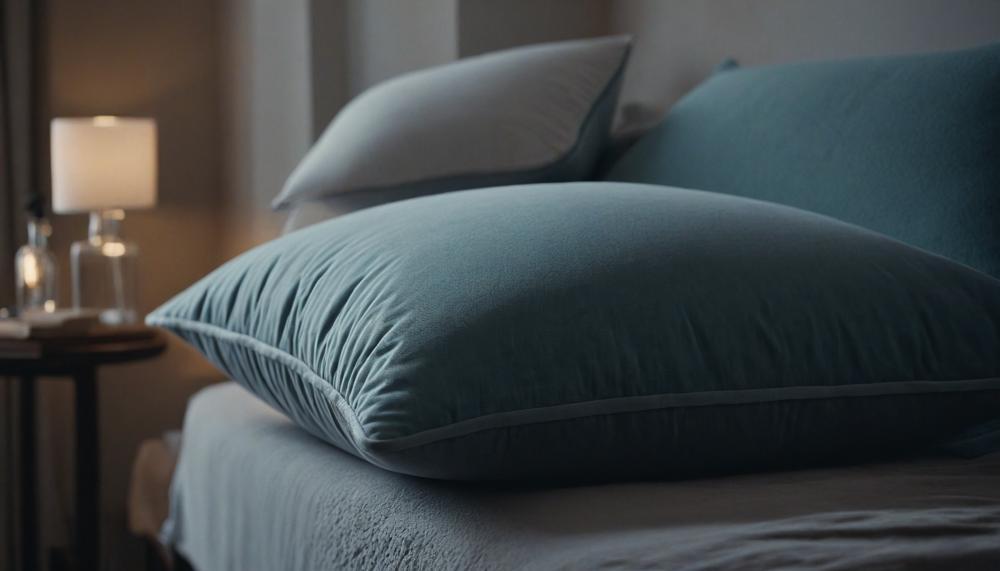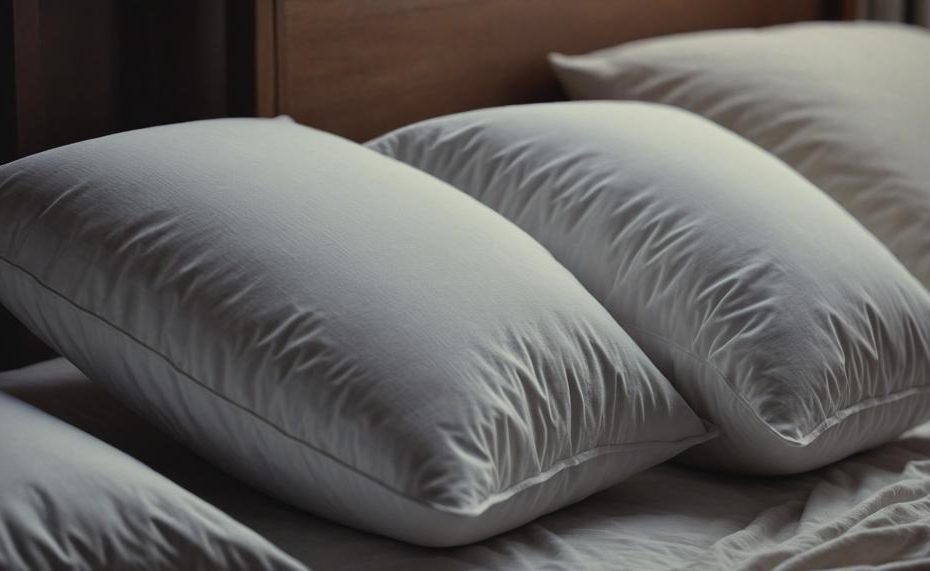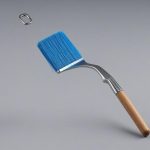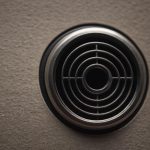Washing down pillows in a front-load washer may seem like a challenge, but it’s a task that can be tackled with ease and confidence. Regularly cleaning your pillows not only prolongs their life but also ensures a fresh and hygienic sleep environment. Despite common care instructions advising against it, washing down pillows in a front-load washer can be done effectively by following a few key steps.
To start, it’s important to balance the load in your washer to prevent any damage to the machine and ensure a thorough clean. Using a gentle, mild detergent specifically designed for delicate fabrics will help preserve the integrity of your down pillows.
Additionally, running an extra spin cycle can help remove excess water, making the drying process much quicker and more efficient.
Drying down pillows without a dryer might seem tricky, but simple methods like hanging them outside or laying them flat in the sun can yield excellent results. These steps not only clean but also fluff and rejuvenate your pillows, giving you that brand-new feel every time you rest your head.
Key Takeaways:
- Balance the load in your washer for optimal cleaning.
- Use a gentle, mild detergent to protect your down pillows.
- Run an extra spin cycle to remove excess water.
- Dry pillows by hanging them or laying them flat in the sun for best results.
By following these straightforward tips, you can keep your down pillows clean, fresh, and in great shape, enhancing your sleep quality and comfort.
Contents
How Often Should You Wash Pillows?
Pillows should be washed every three to six months to maintain cleanliness and hygiene. If you have allergies or respiratory conditions, consider washing them more frequently. This regular washing helps remove bacteria, dust mites, and allergens that accumulate over time.
Using pillow protectors can extend the time between washes by providing an extra layer of protection. It’s also important to replace your pillows every one to two years to ensure they remain supportive and hygienic.
Tips for Washing Pillows:
- Machine Type: Use a front-loading washing machine to prevent damage.
- Load Balance: Wash two pillows at a time to maintain balance.
- Detergent: Use a mild detergent and avoid bleach, which can damage the pillow fabric.
- Extra Rinse: Run an extra rinse cycle to ensure all detergent is removed.
- Drying: Dry pillows thoroughly to prevent mildew. Use a dryer on low heat with clean tennis balls to fluff them up, or air dry them in the sun.
Benefits of Pillow Protectors:
- Extended Cleanliness: Keep pillows cleaner for longer by protecting against sweat and oils.
- Ease of Washing: Wash pillow protectors more frequently than pillows themselves.
- Allergen Barrier: Provide a barrier against dust mites and other allergens.
Pillow Replacement:
- Support: Pillows lose their supportiveness over time.
- Hygiene: Even with regular washing, pillows accumulate allergens and bacteria.
| Action | Frequency | Notes |
| Wash Pillows | Every 3-6 months | More frequent washing if you have allergies. |
| Use Pillow Protectors | Always | Wash protectors every 1-2 months. |
| Replace Pillows | Every 1-2 years | Ensures continued support and hygiene. |
How to Machine Wash Pillows
Washing down pillows in a front load washer is a straightforward process that can help maintain their cleanliness and extend their lifespan. Follow these steps for the best results:
Preparation
- Check for Tears: Ensure there are no tears or holes in the pillows to prevent feathers from escaping during the wash.
- Load Balance: Wash two pillows simultaneously to keep the washer balanced during the spin cycle.
Washing
- Water Temperature: Use warm water to effectively clean and remove contaminants like dust mites and allergens.
- Detergent: Add a small amount of gentle, low-sudsing detergent. Avoid using fabric softeners as they can coat the feathers and reduce their fluffiness.
- Cycle Setting: Select the gentle or delicate cycle to protect the pillow’s filling and fabric.
- Pause and Soak: Once the pillows are fully soaked, pause the washer and let them soak for about 30 minutes to ensure deep cleaning.
Rinsing and Spinning
- Extra Rinse: Run an extra rinse cycle to ensure all detergent is thoroughly removed from the pillows.
- Spin Cycle: Opt for an additional spin cycle to extract as much water as possible, reducing drying time.
Drying
- Tumble Dry: Dry the pillows in a dryer on a low heat setting. Add clean tennis balls or dryer balls to the dryer to help fluff the pillows and prevent clumping of the feathers.
- Air Dry: Alternatively, air dry the pillows by laying them flat in a sunny, well-ventilated area. Regularly flip and fluff the pillows to ensure even drying.
Finishing Touches
- Check for Moisture: Ensure the pillows are completely dry to prevent mould and mildew growth.
- Pillow Covers: Use pillow covers to add an extra layer of protection against dirt and allergens.
How to Hand-Wash Pillows
Properly hand-washing pillows ensures they remain clean and maintain their shape. Follow these steps:
Check the Care Label
Always start by checking the care label for specific instructions from the manufacturer.
Prepare the Washing Area
Clean your sink or bathtub thoroughly to avoid transferring dirt to your pillows.
Fill with Warm Water and Detergent
Fill the sink or tub with warm water. Add a small amount of mild liquid detergent, and mix until it’s evenly distributed.
Submerge and Soak
Submerge the pillow completely and allow it to soak for about 10-15 minutes. This helps to loosen dirt and oils.
Gently Massage
Using your hands, gently massage the pillow to work the detergent through the filling. Be careful not to wring or twist, as this can damage the pillow’s structure.
Rinse Thoroughly
Drain the soapy water and refill the tub with clean, warm water. Rinse the pillow thoroughly, squeezing gently to remove all detergent. Repeat this step if necessary until the water runs clear.
Remove Excess Water
Press the pillow gently to remove excess water. Avoid wringing, as this can misshape the pillow.
Drying
Lay the pillow flat on a clean, dry towel. Roll up the towel with the pillow inside to absorb excess water. Replace with a dry towel and repeat if necessary. Finally, air dry the pillow completely in a well-ventilated area. Placing it in direct sunlight helps to kill any lingering bacteria and keeps it fresh.
Fluff and Maintain Shape
Once the pillow is dry, fluff it by hand to restore its shape. For feather pillows, you might need to occasionally shake them to redistribute the feathers evenly.
How to Remove Odors From Pillows
Removing odors from pillows can be a straightforward task with the right methods. Below are some effective techniques to keep your pillows fresh without causing any damage:
| Method | Steps | Explanation |
| Baking Soda |
|
Baking soda absorbs unpleasant odors effectively. Leaving it on the pillow for several hours enhances its deodorizing power. |
| White Vinegar |
|
White vinegar neutralizes odors and is safe for most pillow types. Ensure the pillow is not overly wet to avoid damage. |
| Enzyme Cleaners |
|
Enzyme cleaners break down organic materials causing odors, making them highly effective for persistent smells. |
| Essential Oils |
|
Essential oils provide a pleasant aroma and have antibacterial properties. They can freshen up pillows while eliminating bacteria. |
| Washing Machine |
|
Regular washing can help remove deep-seated odors. Ensure pillows are fully dry to prevent mildew. |
These methods ensure your pillows remain fresh and clean, providing a more comfortable sleeping experience.
How Often to Replace Pillows
You should replace your pillows every two years to ensure they remain clean and effective.
Over time, pillows lose their shape and become less supportive, while also accumulating dust mites, sweat, oils, and dead skin cells, which can lead to allergies and discomfort.
Detailed Explanation:
Pillows, like other bedding items, have a limited lifespan. Here are key reasons why you should stick to this two-year replacement schedule:
| Reason | Description | Maintenance Tips |
| Loss of Support | Pillows flatten out and lose their ability to provide proper neck and head support, leading to discomfort and potential health issues. | Fluff pillows daily and wash them to maintain their shape. |
| Allergen Build-up | Over time, pillows can become a breeding ground for dust mites, bacteria, and allergens due to sweat, oils, and dead skin cells. | Use pillow protectors and wash them regularly. |
| Hygiene Concerns | Discoloration and unpleasant odours can develop from prolonged use, making pillows unsanitary. | Wash machine-friendly pillows in hot water and hand wash non-machine-friendly ones with warm water and mild detergent. |
Tips for Maintaining Pillow Cleanliness and Effectiveness:

- Washing: Clean machine-friendly pillows in hot water regularly. Hand wash those that are not machine-friendly with warm water and mild detergent. Follow the care instructions on the label.
- Drying: Use low heat settings when drying pillows to prevent clumping. Adding tennis balls in the dryer can help keep them fluffy. For non-dryer-safe pillows, ensure they are air-dried thoroughly.
- Pillow Protectors: Invest in high-quality pillow protectors to shield against dust mites and allergens. Wash these protectors regularly.
- Regular Fluffing: Fluffing pillows daily helps maintain their shape and support.
How to Maintain Pillows
Properly maintaining and caring for down pillows in a front load washer involves a series of careful steps to ensure cleanliness and longevity.
| Step | Action | Details |
| Preparation and Soaking | Remove pillowcases; pre-soak | Fill bathtub with warm water and mild detergent |
| Loading the Washer | Balance the load | Wash two pillows at a time, place vertically |
| Washing Cycle | Gentle cycle | Use warm water, mild detergent, extra rinse cycle |
| Drying Process | Low-heat setting in dryer | Add tennis balls or dryer balls, check frequently |
| Alternative Drying | Lay flat or hang outside | Ensure thorough drying to prevent mold |
Following these steps will help maintain the fluffiness and longevity of your down pillows.
Conclusion
Washing down pillows in a front-load washer doesn’t have to be daunting. With the right approach, you can maintain the freshness and longevity of your pillows, ensuring a restful and clean sleep environment. Here’s how to master the process:
Begin by balancing the load to protect your washer and ensure even cleaning. Using a gentle detergent designed for delicate fabrics is key to preserving the quality of your down pillows. An extra spin cycle will help eliminate excess water, speeding up the drying process.
For drying, you have two effective methods: using a dryer on low heat with clean tennis balls to keep the pillows fluffy, or air drying them in the sun. Both methods rejuvenate your pillows, restoring their loft and comfort.
Key takeaways for pillow maintenance include balancing the washer load, using a mild detergent, running an extra spin cycle, and opting for thorough drying techniques. By incorporating these tips, your pillows will remain clean, fresh, and supportive.
Regularly washing your pillows every three to six months, using pillow protectors, and replacing them every one to two years are essential practices for optimal hygiene and comfort.





